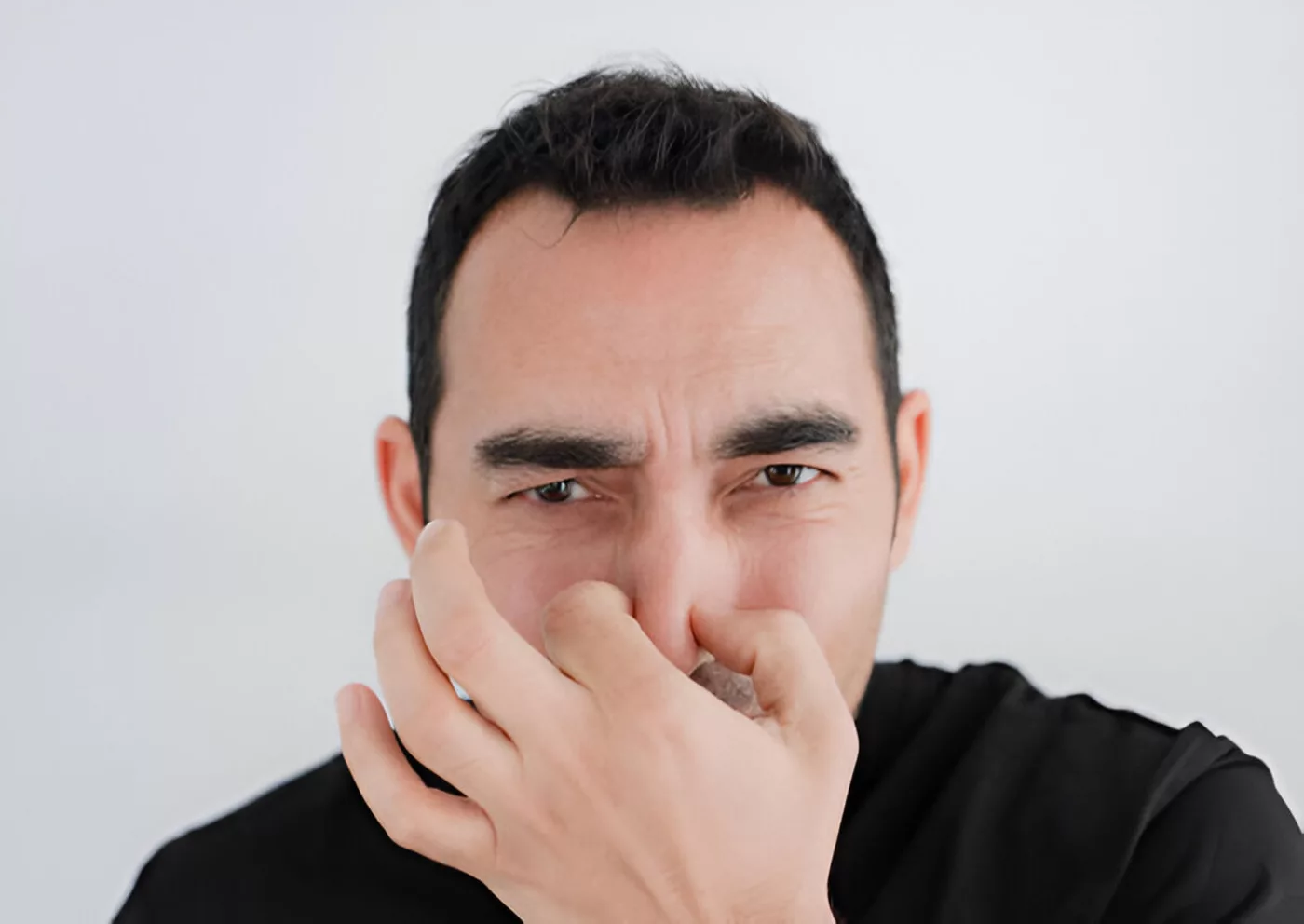
The Valsalva maneuver is a breathing technique in which a person forcefully exhales while keeping the mouth, nostrils, and glottis closed. This action raises pressure inside the chest and middle ear, leading to shifts in intrathoracic pressure and heart rate.1Porth CJ, Bamrah VS, Tristani FE, Smith JJ. The Valsalva maneuver: mechanisms and clinical implications. Heart & Lung: The Journal of Critical Care. 1984 Sep;13(5):507-518. PMID: 6565684. The key event during the maneuver is a rise in intrathoracic pressure, which temporarily reduces venous return to the heart. This decrease in preload activates compensatory reflexes—primarily the baroreceptor reflex—which adjusts the heart rate and blood pressure in response.
Originally described by 17th-century anatomist Antonio Maria Valsalva as a method to clear the middle ear, the maneuver has since found wide application in both clinical and non-clinical settings. It’s used diagnostically to assess autonomic function and heart conditions and therapeutically in situations such as supraventricular tachycardia (SVT) management. Additionally, it can occur naturally during activities like lifting heavy objects, straining during bowel movements, or even coughing.2Pstras L, Thomaseth K, Waniewski J, Balzani I, Bellavere F. The Valsalva maneuver: physiology and clinical examples. Acta Physiol (Oxf). 2016 Jun;217(2):103-19.
What Is the Valsalva Maneuver?
The Valsalva maneuver is also considered one of several “vagal maneuvers”—physical actions that stimulate the vagus nerve to help slow an abnormally fast heart rate. To perform it, you take a deep breath, hold it in, and bear down with your abdominal muscles as if straining during a bowel movement. This process closes off the airway at the level of the glottis, much like during a forceful cough, building pressure within the chest.
By intentionally altering intrathoracic pressure, the Valsalva maneuver influences blood pressure and heart rate. This physiological effect forms the basis for its medical use in cardiac conditions and diagnostic evaluations.
What are the 4 Phases of Valsalva Maneuver?
The Valsalva maneuver consists of four distinct cardiovascular phases that reflect changes in heart rate, blood pressure, and venous return due to fluctuations in intrathoracic pressure. These phases unfold in a predictable sequence and are especially useful in assessing cardiac autonomic responses.
Phase 1: Onset of Strain
As you begin to bear down, the pressure inside your chest rises. This compresses the large veins, momentarily pushing blood out of the thoracic cavity toward the heart and upper body. As a result, there’s a brief rise in systolic blood pressure, typically more than 15 mmHg. This initial spike lasts just a few seconds.
Phase 2: Continued Straining
As the pressure in your chest remains high, it becomes harder for blood to return to the heart (reduced venous return). Because the heart has less blood to pump, your stroke volume and blood pressure start to fall. In response, your body activates a compensatory mechanism: the baroreceptors detect the drop, triggering increased heart rate and vasoconstriction to stabilize blood pressure. This is the longest phase and reflects the body’s effort to stabilize circulation under stress.3Zema MJ, Restivo B, Sos T, Sniderman KW, Kline S. Left ventricular dysfunction–bedside Valsalva manoeuvre. Br Heart J. 1980 Nov;44(5):560-9. doi: 10.1136/hrt.44.5.560. PMID: 7437198; PMCID: PMC482445.
Phase 3: Release of Strain
When you stop straining, the pressure inside your chest suddenly drops. This leads to an abrupt decrease in systolic blood pressure as the pressure on the chest and blood vessels is lifted, briefly expanding thoracic vessels and causing blood pooling. This phase is typically very short.
Phase 4: Recovery
Blood quickly rushes back to the heart, increasing cardiac output. However, because the sympathetic system was already activated during Phase 2, this results in a temporary overshoot in blood pressure, usually more than 15 mmHg above baseline. In response, the baroreceptors activate the parasympathetic nervous system, which can slow the heart rate (bradycardia) as blood pressure returns to normal.4Nishimura RA, Tajik AJ. The Valsalva maneuver and response revisited. Mayo Clin Proc. 1986 Mar;61(3):211-7.
What is the Valsalva Maneuver Used for?
People use this simple procedure for various reasons, including restoring their heartbeat and blood pressure to normal. Your healthcare provider can use it to treat you or diagnose you.
Cardiovascular Assessment
It can be used to evaluate the cardiovascular system by detecting variations in heart rate and blood pressure. Blood pressure initially increases during the maneuver; then, it starts to drop. This can help you identify abnormalities in heart function.
Barotrauma Prevention
When flying or scuba diving, rapid pressure changes can affect air-filled spaces like the middle ear. Performing the Valsalva maneuver helps equalize pressure in the ears and sinuses, reducing the risk of barotrauma—an injury caused by pressure imbalance.5Lynch, James H. MD1; Deaton, Travis G. MD2. Barotrauma With Extreme Pressures in Sport: From Scuba to Skydiving. Current Sports Medicine Reports 13(2):p 107-112, March/April 2014. | DOI: 10.1249/JSR.0000000000000039 .
Treatment of Supraventricular Tachycardia
Supraventricular tachycardia is a type of abnormal heartbeat that can be managed by using the Valsalva maneuver. The increased pressure in the chest during the maneuver can stimulate the vagus nerve, slowing the heart rate. It’s a first-line vagal maneuver in emergency and outpatient settings.
Diagnosis of ANS (Autonomic Nervous System) Disorders
Healthcare providers can assess how well the autonomic nervous system is functioning by monitoring changes in blood pressure and heart rate during and after the maneuver. This is particularly useful in diagnosing conditions like orthostatic hypotension or autonomic neuropathy.
Evaluation of Middle Ear Function
The Valsalva maneuver is used to test the middle ear function and the function of the Eustachian tube. The maneuver causes pressure fluctuations in the middle ear, allowing for studying parameters such as Eustachian tube patency and eardrum mobility.
In certain cases, the Valsalva maneuver may assist in enhancing the delivery of nasal sprays or inhaled medications by increasing local pressure. However, this is not a standard or widely recommended practice in clinical guidelines. Carrying out the maneuver improperly or in certain medical conditions can be dangerous; hence, a medical practitioner should supervise it.
How to do the Valsalva Maneuver?
To perform the Valsalva maneuver, do the following:
- Sit or lie down on your back.
- Hold your breath after taking a deep breath.
- Bear down hard, as though you are trying to start a bowel movement
- Hold this position for 10 to 15 seconds.
- Forcefully exhale to let your breath out quickly.
- Resume normal breathing
- Wait about a minute before you try again.
Modified and Reverse Valsalva Maneuvers
Two variations of the Valsalva maneuver are sometimes used to help treat supraventricular tachycardia (SVT).
-
Modified Valsalva Maneuver:
This version enhances venous return and has a higher success rate for treating SVT. After the straining phase, the patient’s legs are lifted (usually to a 45° angle) to promote blood flow back to the heart. Clinical studies have shown this approach is more effective than the standard version, successful in about 46% of cases compared to 16%.6Appelboam A, Reuben A, Mann C, Gagg J, Ewings P, Barton A, Lobban T, Dayer M, Vickery J, Benger J., REVERT trial collaborators. Postural modification to the standard Valsalva maneuver for emergency treatment of supraventricular tachycardias (REVERT): a randomized controlled trial. Lancet. 2015 Oct 31;386(10005):1747-53.
-
Reverse Valsalva Maneuver:
This involves inhaling deeply and holding the breath while closing the mouth and nose, usually for about 10 seconds. This maneuver increases vagal tone and decreases sympathetic activity, which leads to bradycardia and a drop in blood pressure (the Bezold–Jarisch reflex). If successful, this results in the resolution of SVT within 15 seconds.
While it can be useful in some situations of SVT, it may not be appropriate or effective for all individuals or all forms of SVT.7Gaudart P, Cazes N, Simon K, Larger D, Deharo JC. The reverse vagal maneuver: A new tool for the treatment of supraventricular tachycardia? Am J Emerg Med. 2021 Mar;41:66-69.
What are the Risks of the Valsalva Maneuver?
Most people can do the maneuver safely without any complications. But there are conditions in which it is risky to perform this maneuver, like as the following conditions:
- Cardiovascular Conditions
The Valsalva maneuver can cause significant changes in blood pressure and heart rate. Caution is needed in cardiovascular conditions like hypertension, coronary artery disease, or certain arrhythmias during the maneuver. It’s advisable to consult a healthcare professional before attempting the Valsalva maneuver in these cases. - Glaucoma
The Valsalva maneuver can increase intraocular pressure, which is the pressure within the eye. This can be particularly risky for individuals with glaucoma or those with high intraocular pressure. The increased pressure in the eye may worsen symptoms or damage the optic nerve. Therefore, individuals with glaucoma should avoid or exercise caution when performing the Valsalva maneuver. - Recent Surgical Procedures
Individuals who have undergone recent surgical procedures, particularly those involving the chest or abdomen, may need to avoid or modify the Valsalva maneuver. The increased strain and pressure created during the maneuver can place stress on healing surgical incisions or sutures. It is crucial to follow the specific instructions provided by the surgeon or healthcare professional regarding activity restrictions after surgery. - Retinal Detachment
Retinal detachment is a serious eye condition where the retina detaches from its normal position. The Valsalva maneuver can increase intraocular pressure, which may pose a risk to the detached retina. Therefore, individuals with a history of retinal detachment or at risk for it should exercise caution or avoid the Valsalva maneuver. - Pregnancy
Pregnant individuals should be cautious when performing the Valsalva maneuver. Increased intra-abdominal pressure and alterations in blood flow can have an impact on the circulatory system, thereby risking pregnancy. It’s important to consult with an obstetrician or healthcare provider for guidance on performing the maneuver during pregnancy.It rarely has any side effects; however, in rare cases, people have reported:
- Chest Pain
- Stroke
- Abnormal heart rhythms
- Fainting (Syncope)
- Retinopathy
- Hypotension
Does the Valsalva Maneuver Increase the Heart Rate?
During the Valsalva maneuver, the increased intrathoracic pressure reduces venous return to the heart, leading to a drop in stroke volume. This decrease triggers a compensatory rise in heart rate and systemic vascular resistance via the baroreflex mechanism.
What Usually Happens After the Valsalva Maneuver?
If successful, the Valsalva maneuver will slow down a rapid heart rate, typically within a minute. However, if the maneuver does not work after three attempts, healthcare professionals will move on to the next stages of treatment. These may include medications, carotid massage, or electric cardioversion, depending on your vital signs, symptoms, and the specific type of supraventricular tachycardia.
Other Types of Vagal Maneuvers
A variety of physical maneuvers can increase vagal tone and influence heart rate. Some of these are used clinically for diagnostic or therapeutic purposes, while others may have unintended effects:
- Carotid Sinus Massage: Commonly used for diagnostic purposes, particularly in evaluating carotid sinus hypersensitivity.
- Water Immersion (Diving Reflex): Cold water immersion activates the diving reflex, stimulating vagal tone.
- Eyeball Pressure (Oculocardiac Reflex): Pressure on the eyeball can stimulate the vagus nerve.
- Breath Holding: Increases intrathoracic pressure and can stimulate the vagus nerve.
- Rectal Examination: Often used to stimulate vagal tone.
- Coughing, Gagging, Vomiting: Physical actions that can also trigger vagal stimulation.
- Swallowing: This can stimulate the vagus nerve and influence heart rate.
- Intracardiac Catheter Placement and Nasogastric Tube Placement: Both procedures can increase vagal tone.
- Squatting and Trendelenburg Position: Postures that may affect vagal stimulation.
While only some maneuvers, such as carotid sinus massage and the Valsalva maneuver, are commonly used in clinical practice, others can also influence autonomic function.8UpToDate. Vagal maneuvers. Available at: https://www.uptodate.com/contents/vagal-maneuvers?search=valsalva%20maneuver&source=search_result&selectedTitle=1%7E150&usage_type=default&display_rank=1#H3460282877. Accessed April 16, 2025.
Conclusion
The Valsalva maneuver is a voluntary action where you forcefully exhale against a closed glottis. It increases pressure within the chest, affecting heart rate, blood pressure, and blood flow. It has various applications in medicine, diving, weightlifting, and more. However, individuals should approach it cautiously, particularly if they have certain medical conditions, as doing it can carry risks, such as a drop in blood pressure.
Refrences
- 1Porth CJ, Bamrah VS, Tristani FE, Smith JJ. The Valsalva maneuver: mechanisms and clinical implications. Heart & Lung: The Journal of Critical Care. 1984 Sep;13(5):507-518. PMID: 6565684.
- 2Pstras L, Thomaseth K, Waniewski J, Balzani I, Bellavere F. The Valsalva maneuver: physiology and clinical examples. Acta Physiol (Oxf). 2016 Jun;217(2):103-19.
- 3Zema MJ, Restivo B, Sos T, Sniderman KW, Kline S. Left ventricular dysfunction–bedside Valsalva manoeuvre. Br Heart J. 1980 Nov;44(5):560-9. doi: 10.1136/hrt.44.5.560. PMID: 7437198; PMCID: PMC482445.
- 4Nishimura RA, Tajik AJ. The Valsalva maneuver and response revisited. Mayo Clin Proc. 1986 Mar;61(3):211-7.
- 5Lynch, James H. MD1; Deaton, Travis G. MD2. Barotrauma With Extreme Pressures in Sport: From Scuba to Skydiving. Current Sports Medicine Reports 13(2):p 107-112, March/April 2014. | DOI: 10.1249/JSR.0000000000000039
- 6Appelboam A, Reuben A, Mann C, Gagg J, Ewings P, Barton A, Lobban T, Dayer M, Vickery J, Benger J., REVERT trial collaborators. Postural modification to the standard Valsalva maneuver for emergency treatment of supraventricular tachycardias (REVERT): a randomized controlled trial. Lancet. 2015 Oct 31;386(10005):1747-53.
- 7Gaudart P, Cazes N, Simon K, Larger D, Deharo JC. The reverse vagal maneuver: A new tool for the treatment of supraventricular tachycardia? Am J Emerg Med. 2021 Mar;41:66-69.
- 8UpToDate. Vagal maneuvers. Available at: https://www.uptodate.com/contents/vagal-maneuvers?search=valsalva%20maneuver&source=search_result&selectedTitle=1%7E150&usage_type=default&display_rank=1#H3460282877. Accessed April 16, 2025.




